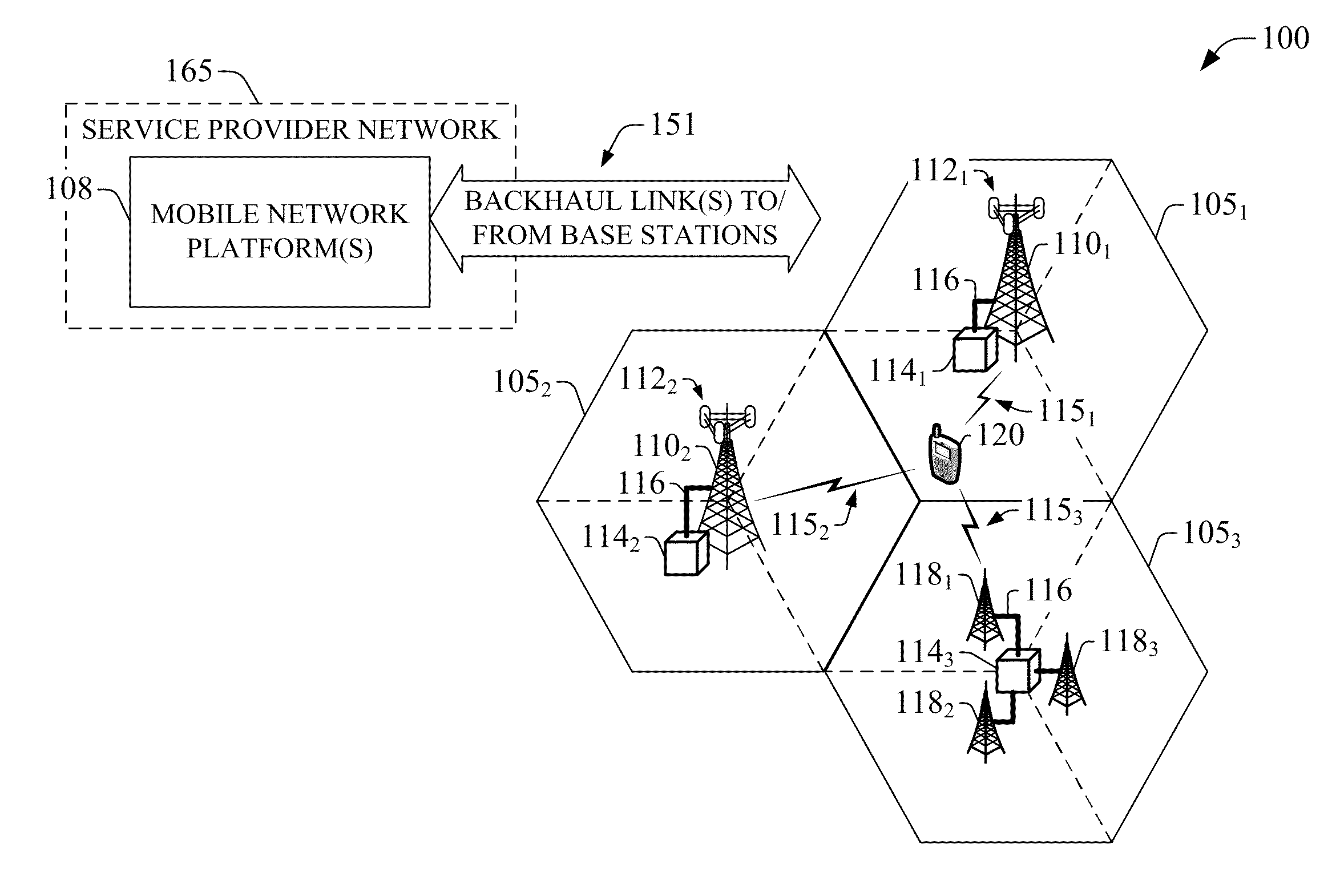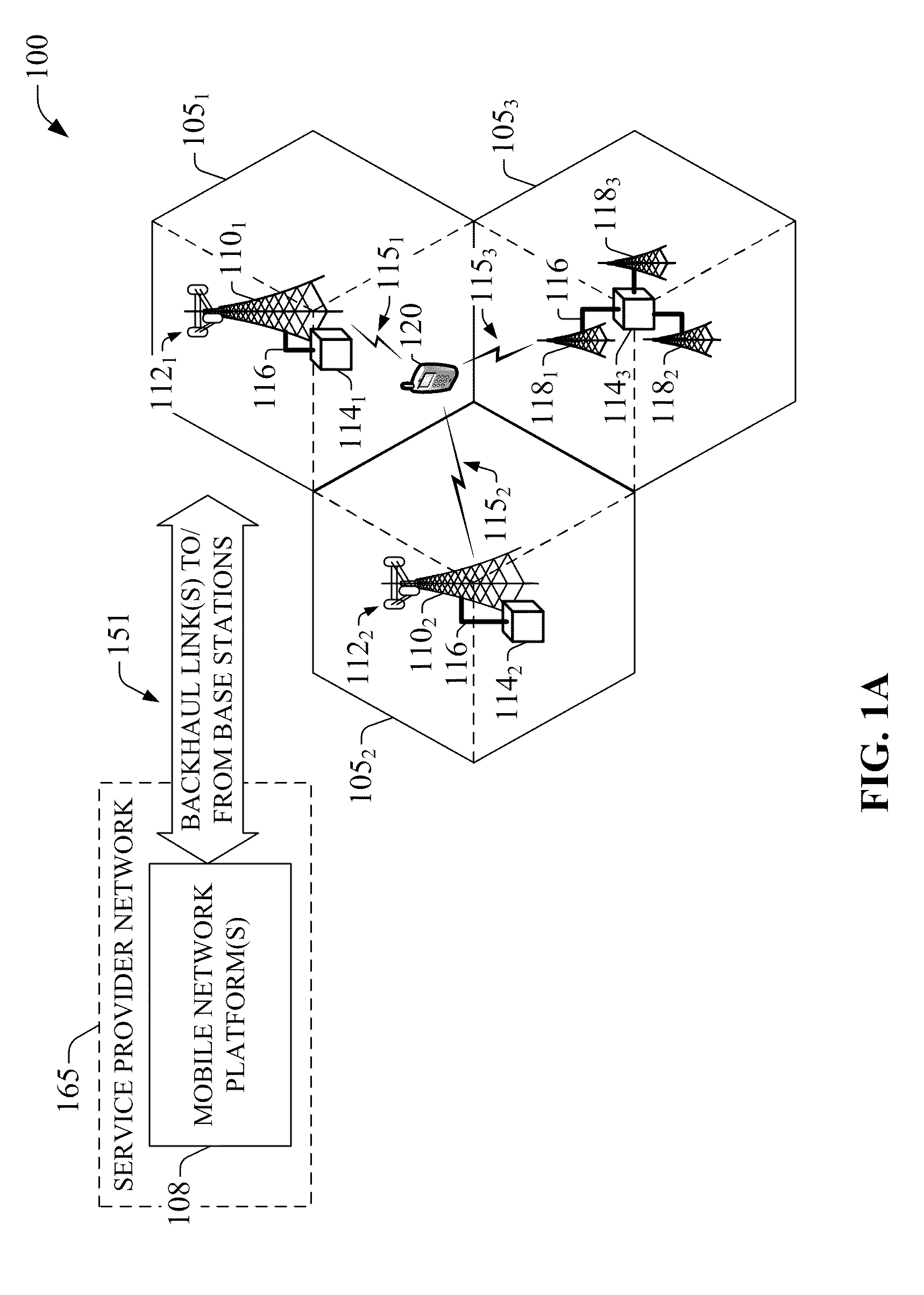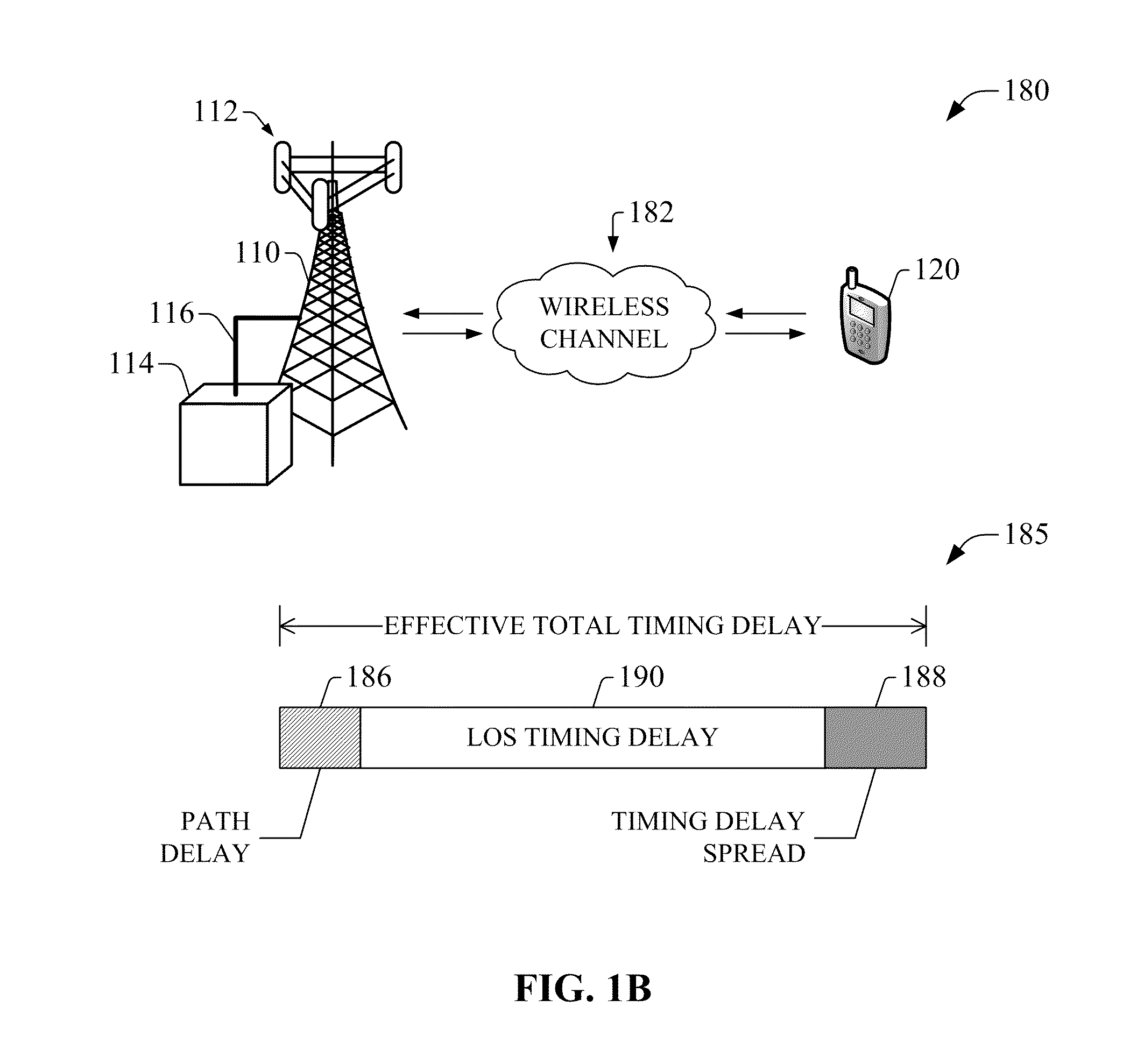Compensation of propagation delays of wireless signals
a technology of wireless signals and offsets, applied in the field of wireless communication, can solve the problems of affecting timing delay and arising wireless signal path propagation delay, and achieve the effects of reducing the magnitude of propagation delay error, reducing the error in location determination, and reducing the error in location fix
- Summary
- Abstract
- Description
- Claims
- Application Information
AI Technical Summary
Benefits of technology
Problems solved by technology
Method used
Image
Examples
embodiment 1000
[0069]FIG. 10 illustrates a block diagram of an example embodiment of an access point to implement and exploit one or more features or aspects of the subject innovation. In embodiment 1000, AP 1005 can receive and transmit signal(s) (e.g., attachment signaling) from and to wireless devices like femto access points, access terminals, wireless ports and routers, or the like, through a set of antennas 10201-1020N (N is a positive integer). It should be appreciated that antennas 10201-1020N embody antenna(s) 232, and are a part of communication platform 1015, which comprises electronic components and associated circuitry that provides for processing and manipulation of received signal(s) and signal(s) to be transmitted. Such electronic components and circuitry embody at least in part signaling and traffic component 234; communication platform 1015 operates in substantially the same manner as communication platform 230 described hereinbefore. In an aspect, communication platform 1015 inc...
embodiment 1100
[0075]In embodiment 1100, wireless network platform 1110 also includes serving node(s) 1116 that, based upon available radio technology layer(s) within technology resource(s) 1117, convey the various packetized flows of data streams received through PS gateway node(s) 1118. It is to be noted that for technology resource(s) 1117 that rely primarily on CS communication, server node(s) can deliver traffic without reliance on PS gateway node(s) 1118; for example, server node(s) can embody at least in part a mobile switching center. As an example, in a 3GPP UMTS network, serving node(s) 1116 can be embodied in serving GPRS support node(s) (SGSN).
[0076]For radio technologies that exploit packetized communication, server(s) 1114 in mobile, or wireless, network platform 1110 can execute numerous applications (e.g., location services, online gaming, wireless banking, wireless device management . . . ) that can generate multiple disparate packetized data streams or flows, and manage (e.g., sc...
PUM
 Login to View More
Login to View More Abstract
Description
Claims
Application Information
 Login to View More
Login to View More - R&D
- Intellectual Property
- Life Sciences
- Materials
- Tech Scout
- Unparalleled Data Quality
- Higher Quality Content
- 60% Fewer Hallucinations
Browse by: Latest US Patents, China's latest patents, Technical Efficacy Thesaurus, Application Domain, Technology Topic, Popular Technical Reports.
© 2025 PatSnap. All rights reserved.Legal|Privacy policy|Modern Slavery Act Transparency Statement|Sitemap|About US| Contact US: help@patsnap.com



